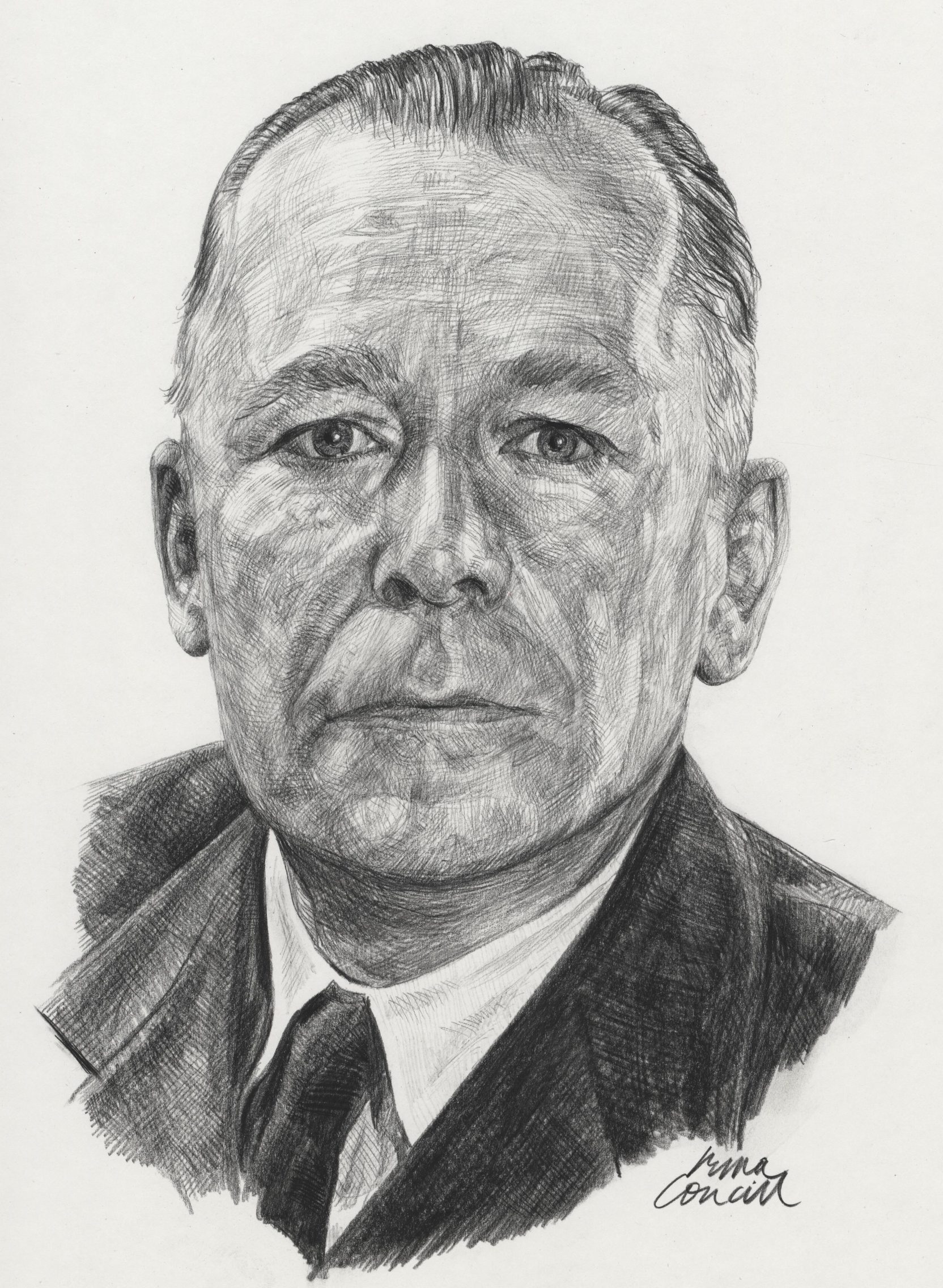Basil Deacon Hobbs

Birth Date: December 20, 1894
Birth Place: Arlington, Berksshire, England
Death Date: 1963
Year Inducted: 1987
Awards: DSO; OBE; DSC*
This man truly reached for the stars and through his flying achievements and ability in peace and war brought honour to the aviation fraternity of Canada
Bravery in the Royal Naval Air Service
Basil Deacon Hobbs, D.S.O., O.B.E, D.S.C.*, was born in Arlington, Berks, England, on December 20, 1894. His family moved to Canada where he obtained his education and developed a life-long love for flying boats, ships and the sea. In 1915 he took flying training at the Wright Flying School, Dayton, Ohio, U.S.A., and after receiving his wings joined the Royal Naval Air Service as a Flight-Lieutenant. At his posting to Felixstowe, Norfolk, England, he flew the F-3 and H-12 flying boats on anti-submarine patrols.
Hobbs was awarded the Distinguished Service Cross (D.S.C.) in 1917 for sinking a German submarine. Later that year, in his four-engine flying boat, he destroyed a German Zeppelin, following which his aircraft was severely damaged by fighters, forcing him to land in the sea. He taxied across the Channel to England where he beached the flying boat. He was awarded the Distinguished Service Order (D.S.O.) for this action. The letter from Their Lords Commissioners of the Admiralty announcing the D.S.O. award also contained a second letter, a reprimand for, "taking one of H.M. aircraft away from its allotted training area without permission, and, thereby, causing serious damage to said aircraft." In November of the same year he was awarded a Bar to his D.S.C. for sinking another submarine and was Mentioned in Despatches. Hobbs became the only Canadian on record who was directly involved in the destruction of two U-boats. In 1919 he returned to Canada.
The First Trans-Canada Flight
He joined the Canadian Air Force (CAF) in 1920 and was employed by the Canadian Air Board as a 'Certificate Examiner' for civil aircraft and pilot licencing. In October 1920, Hobbs was one of the pilots on the first trans-Canada flight, under the leadership of LCol Robert Leckie. Conducted by eight men with six different aircraft of the CAF, the undertaking began on October 7, 1920, from Halifax, Nova Scotia. Hobbs was in charge of the first leg, from Nova Scotia to Winnipeg, Manitoba. He shared the flying duties with Leckie, who was the first Director of Flying Operations with the Air Board of Canada. Flying boats were used on this section of the trip, and were replaced by single-engined, wheel-equipped, two-seater de Havilland biplanes on the leg from Winnipeg through to Vancouver, British Columbia. Mail was also carried on this cross-country flight. In all, the trip took ten days, with a flying time of 49 hours, covering 3,265 miles (5,250 km).
In order to complete the long trans-Canada trip in 1920, pilots and crews had to overcome almost insurmountable difficulties, such as the lack of weather reports, airfields, communication, refuelling stations, and other facilities. Good planning and persistence kept them focused on their goal.
Forestry Work and Fire Control
The following year Hobbs was appointed Superintendent and Commanding Officer of the Winnipeg Air Station where the main responsibilities included forestry work and fire control operations. Prior to World War II, fighting forest fires was an almost hopeless task. Canoe patrols would often miss seeing a blaze only a short distance back from the lakeshore. It was the men of the newly founded Canadian Air Force who soon proved that aircraft were an effective way to spot and fight forest fires. The airplane originally purchased for the job was the Curtiss HS-2L flying boat, followed later by the more powerful Vickers Viking, which was not only useful for spotting fires but also served very effectively as a photographic machine. The camera was mounted on the nose of the flying boat like a machine gun, away from the structure of the airplane itself, and the cameraman had a clear view for miles around at an operating altitude of 5,000 feet (1,500 m).
His Greatest Contribution
Hobbs made his greatest contribution to Canadian aviation as a peacetime pilot. In 1924 he was the sole pilot on the crew of a Vickers Viking assigned to carry out the first long-range aerial photographic survey undertaken in Canada. The route, beginning at the southern tip of Lake Winnipeg, was over the northern regions of Saskatchewan and Manitoba. The flight was accomplished in one month and covered nearly 3,000 miles (4,800 km). The geodetic trilateral survey of the Canadian Arctic Islands, a project begun in 1924 by Hobbs, was completed in 1957.
A Skill In Constant Demand
In 1924 he became a Squadron Leader in the newly formed Royal Canadian Air Force (RCAF). A year later he became the Director of Air Operations, Ottawa. Following his resignation from the RCAF in 1927, he established his own business, Basil D. Hobbs and Sons, Wine & Spirit Merchants in Montreal.
At the beginning of World War II, Hobbs was re-commissioned into the RCAF with the rank of Group Captain. His skills and flying ability were put to use in anti-submarine warfare training and operations as Commanding Officer at Dartmouth, Nova Scotia, and later at Patricia Bay, British Columbia. He was named an Officer of the Order of the British Empire (O.B.E., Military). Hobbs died in Montreal, Quebec, in 1963.
Basil Deacon Hobbs was inducted as a Member of Canada's Aviation Hall of Fame in 1987 at a ceremony held in Edmonton, Alberta.
To return to the Inductee Page, please click here.
